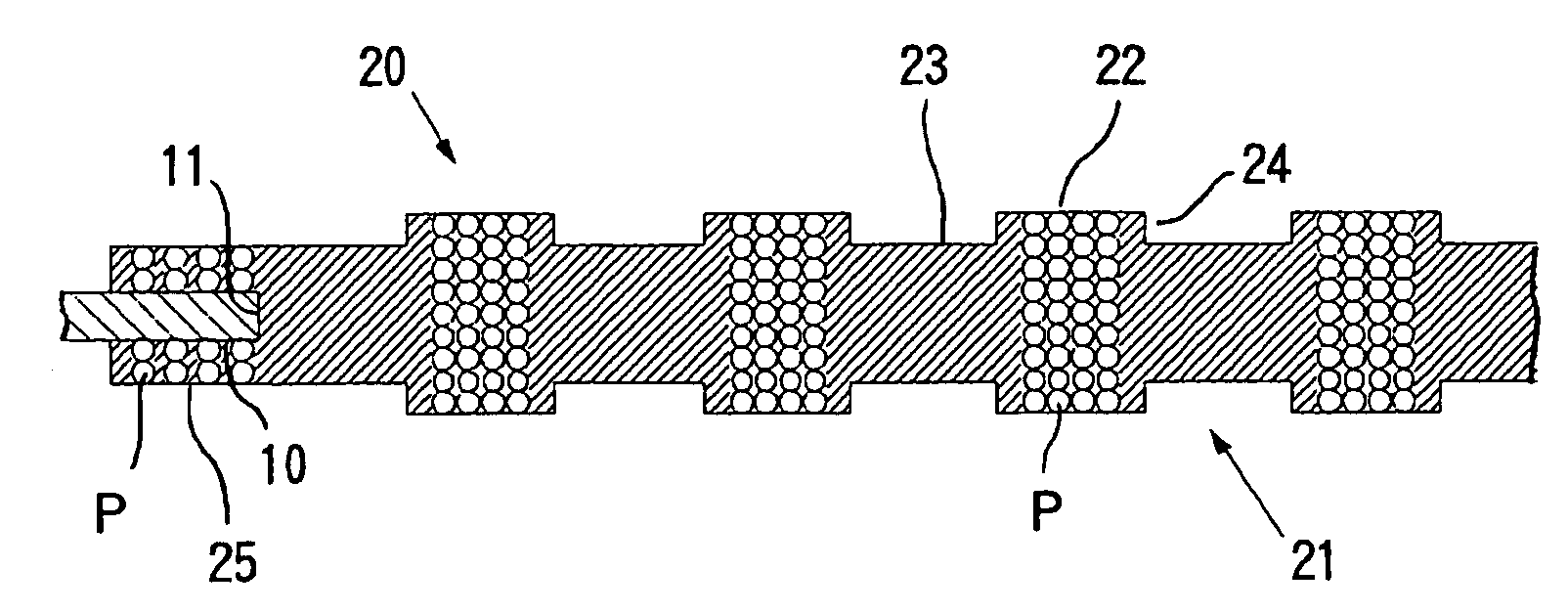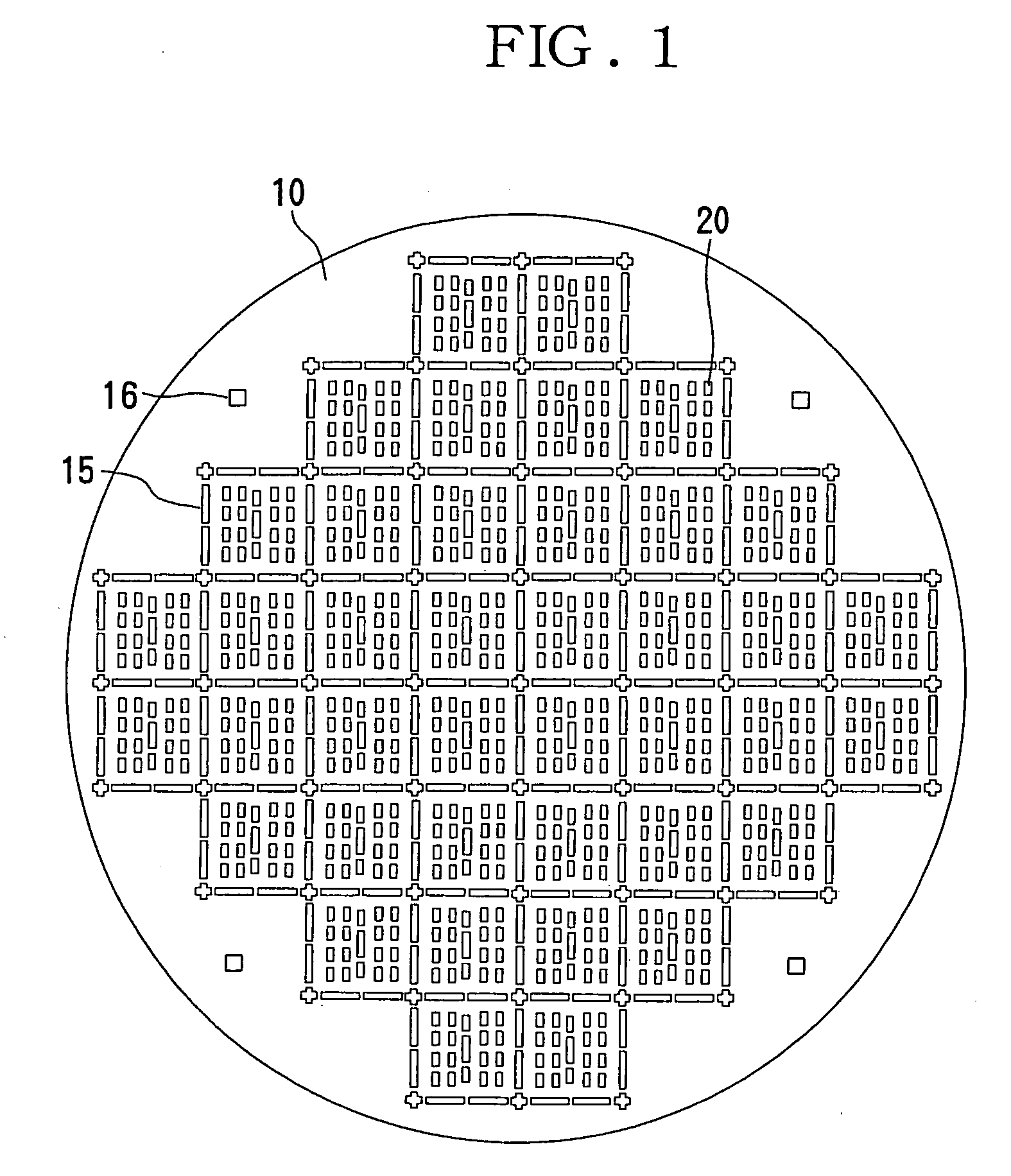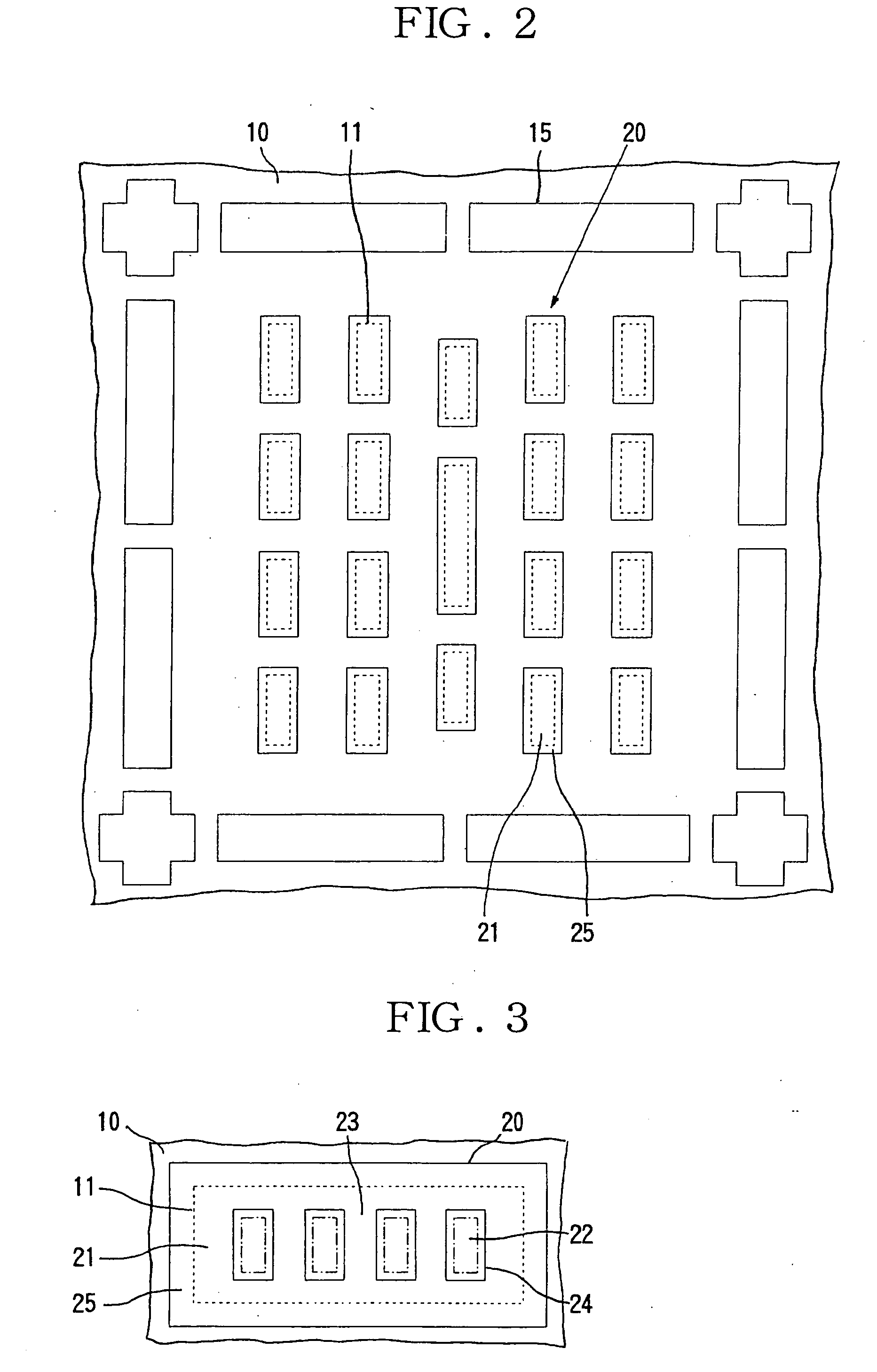Anisotropic conductivity connector, conductive paste composition, probe member, and wafer inspection device, and wafer inspecting method
a technology of anisotropically conductive elastomer sheet and probe, which is applied in the direction of coupling device connection, semiconductor/solid-state device details, instruments, etc., can solve the problems of difficult positioning, holding and fixing of uneven distribution type anisotropically conductive elastomer sheets, and long time for individual electrical inspection, etc., to achieve the effect of convenient conductivity
- Summary
- Abstract
- Description
- Claims
- Application Information
AI Technical Summary
Benefits of technology
Problems solved by technology
Method used
Image
Examples
example 1
(1) Frame Plate:
[0345] A frame plate having a diameter of 8 inches and 596 anisotropically conductive film-arranging holes formed correspondingly to the respective regions of the electrodes to be inspected in Wafer W1 for test described above was produced under the following conditions in accordance with the construction shown in FIGS. 20 and 21.
[0346] A material of this frame plate 10 is covar (saturation magnetization: 1.4 Wb / m2; coefficient of linear thermal expansion: 5×10−6 / K), and the thickness thereof is 60 μm.
[0347] The anisotropically conductive film-arranging holes 11 each have dimensions of 1,800 μm in a lateral direction (left and right direction in FIGS. 20 and 21) and 600 μm in a vertical direction (upper and lower direction in FIGS. 20 and 21).
[0348] A circular air circulating hole 15 is formed at a central position between anisotropically conductive film-arranging holes 11 adjacent in the vertical direction, and the diameter thereof is 1,000 μm.
(2) Spacer:
[03...
example 2
[0373] A conductive paste composition was prepared in the same manner as in Example 1 except that Conductive Particles [b] were used in place of Conductive Particles [a]. This conductive paste composition will be referred to as “Paste (1-b)”.
[0374] An anisotropically conductive connector was produced in the same manner as in Example 1 except that Paste (1-b) was used in place of Paste (1-a). This anisotropically conductive connector will hereinafter be referred to as “Anisotropically Conductive Connector C2”.
[0375] The content of the conductive particles in the conductive parts for connection in each of the elastic anisotropically conductive films of Anisotropically Conductive Connector C2 thus obtained was investigated. As a result, the content was about 30% in terms of a volume fraction in all the conductive parts for connection.
[0376] The parts to be supported and the insulating parts in the functional parts of the elastic anisotropically conductive films were observed. As a r...
example 3
[0378] A conductive paste composition was prepared in the same manner as in Example 1 except that Conductive Particles [c] were used in place of Conductive Particles [a]. This conductive paste composition will be referred to as “Paste (1-c)”.
[0379] An anisotropically conductive connector was produced in the same manner as in Example 1 except that Paste (1-c) was used in place of Paste (1-a). This anisotropically conductive connector will hereinafter be referred to as “Anisotropically Conductive Connector C3”.
[0380] The content of the conductive particles in the conductive parts for connection in each of the elastic anisotropically conductive films of Anisotropically Conductive Connector C3 thus obtained was investigated. As a result, the content was about 30% in terms of a volume fraction in all the conductive parts for connection.
[0381] The parts to be supported and the insulating parts in the functional parts of the elastic anisotropically conductive films were observed. As a r...
PUM
 Login to View More
Login to View More Abstract
Description
Claims
Application Information
 Login to View More
Login to View More - R&D
- Intellectual Property
- Life Sciences
- Materials
- Tech Scout
- Unparalleled Data Quality
- Higher Quality Content
- 60% Fewer Hallucinations
Browse by: Latest US Patents, China's latest patents, Technical Efficacy Thesaurus, Application Domain, Technology Topic, Popular Technical Reports.
© 2025 PatSnap. All rights reserved.Legal|Privacy policy|Modern Slavery Act Transparency Statement|Sitemap|About US| Contact US: help@patsnap.com



